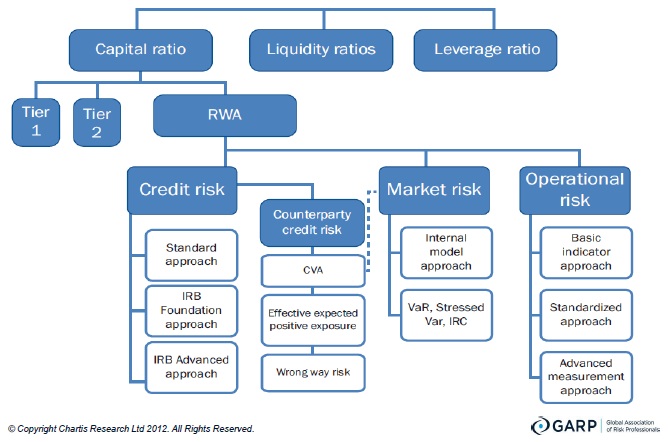The second speaker at the October 18, 2012 GARP webinar was Peyman Mestchian, Managing Partner, Chartis Research. The Basel III “journey” will have three main impacts in financial institutions, he said:
(1) Improved capital management. Mestchian believes banks will figure out how to adapt “without sacrificing their efficiency”;
(2) Greater integration of risk, compliance, and finance functions. There will be overlapping responsibilities for Basel III, between front office, finance & treasury, and risk & compliance departments; and
(3) Implementation of enterprise-wide risk management systems.
Under Basel III, “capital optimization has a much higher profile,” Mestchian said. “Due to short timelines, the integration of risk and finance that was begun in Basel II could not be completed.” Now, however, the linkage should definitely be completed.
“Having a unified data management system is a critical factor,” according to Mestchian. In response to a question from the audience, Mestchian said that, pre-2008, on average 6 percent of a bank’s annual IT budget went to risk management. Post-2008, that figure has jumped to 9 to 10 percent of the IT budget.
Furthermore, “the CRO and CFO offices must be aligned,” Mestchian said. [CRO = Chief Risk Officer; CFO = Chief Financial Officer.] He stressed the banks should aim for alignment, not integration, of risk and finance.
There followed a few slides on data architecture. With many labels and visual elements competing for attention, they were challenging to absorb in the brief time the audience had to look at them. [Ed. Note: slide presentation can be downloaded; see URL below.]
“The devil is in the data,” said Mestchian. How data will be managed and handled and moved around will be crucial to how well a financial institution adjusts to Basel III.
At the end of the webinar, someone asked: “Isn’t good data management just plain good management?” Mestchian agreed, and added, “If the only reason for data management is compliance, you won’t realize the full benefits.” Drawing an analogy, he added, “Of all drivers, racing drivers invest the most in safety. The safer you are, the faster you can go.”
Peyman Mestchian was followed by the third and final speaker, Alison Bailey-Flynn. ª
Click here to read comments of first speaker, Mario Onorato. ª
The webinar presentation slides can be found at: http://event.on24.com/r.htm?e=523101&s=1&k=4D7D88CA0CFABFBB6A010851712841BF>


